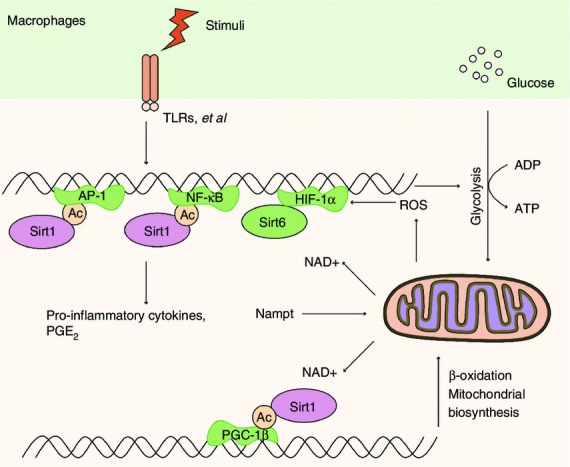Figure 1.

Sirt1 controls the immune responses in macrophages. When Toll-like receptor 4 (TLR4) signal is ignited, reactive oxygen species (ROS) stabilize hypoxia-inducible factor 1α (HIF-1α) protein and activate glycolysis-related genes accompanied by nuclear factor-κB (NF-κB) p65 activation. HIF-1α could further increase glycolysis and inhibit mitochondrial glucose oxidation. When transformed to late stage, Sirt1 and Sirt6 are required for the switch from glycolysis to enhanced fatty acid mitochondrial oxidation, which also requires the enzyme Nampt. Sirt1 deacetylates and undermines the activation of the NF-κB pathway as well as transcription factor activator protein 1 (AP-1). Sirt1 could also support fatty acid oxidation by deacetylating and activating peroxisome proliferator-activated receptor gamma coactivator 1β (PGC-1β), promoting mitochondrial biogenesis and recovering homeostasis, while Sirt6 represses glucose metabolism by epigenetically silencing the HIF-1α pathway, consequently promoting a shift towards fatty acid oxidation. Meanwhile, activation of the TLR signalling pathway could induce Nampt expression during the late stage of macrophage activation, thus causing a negative feedback effect on macrophage activation.
